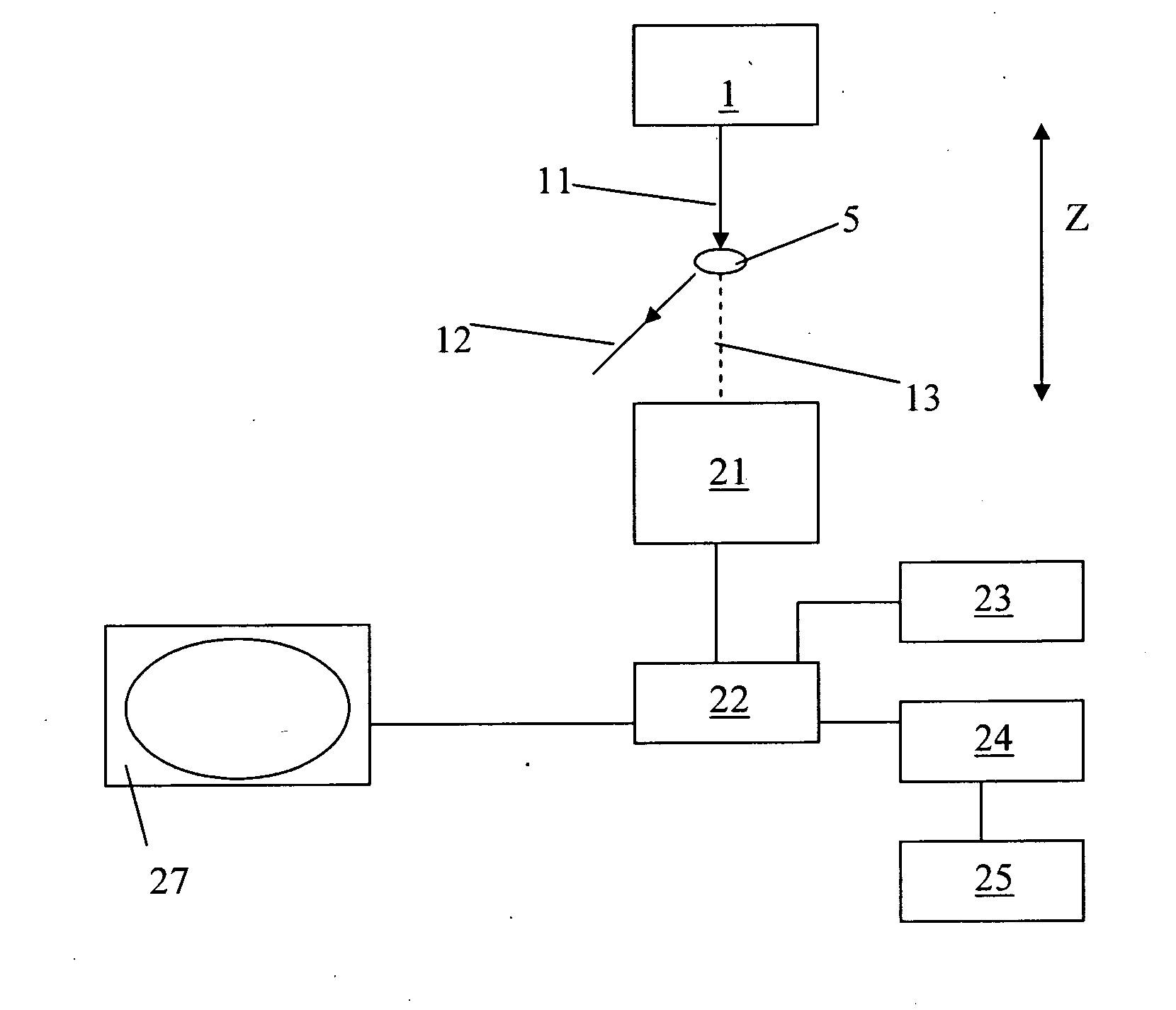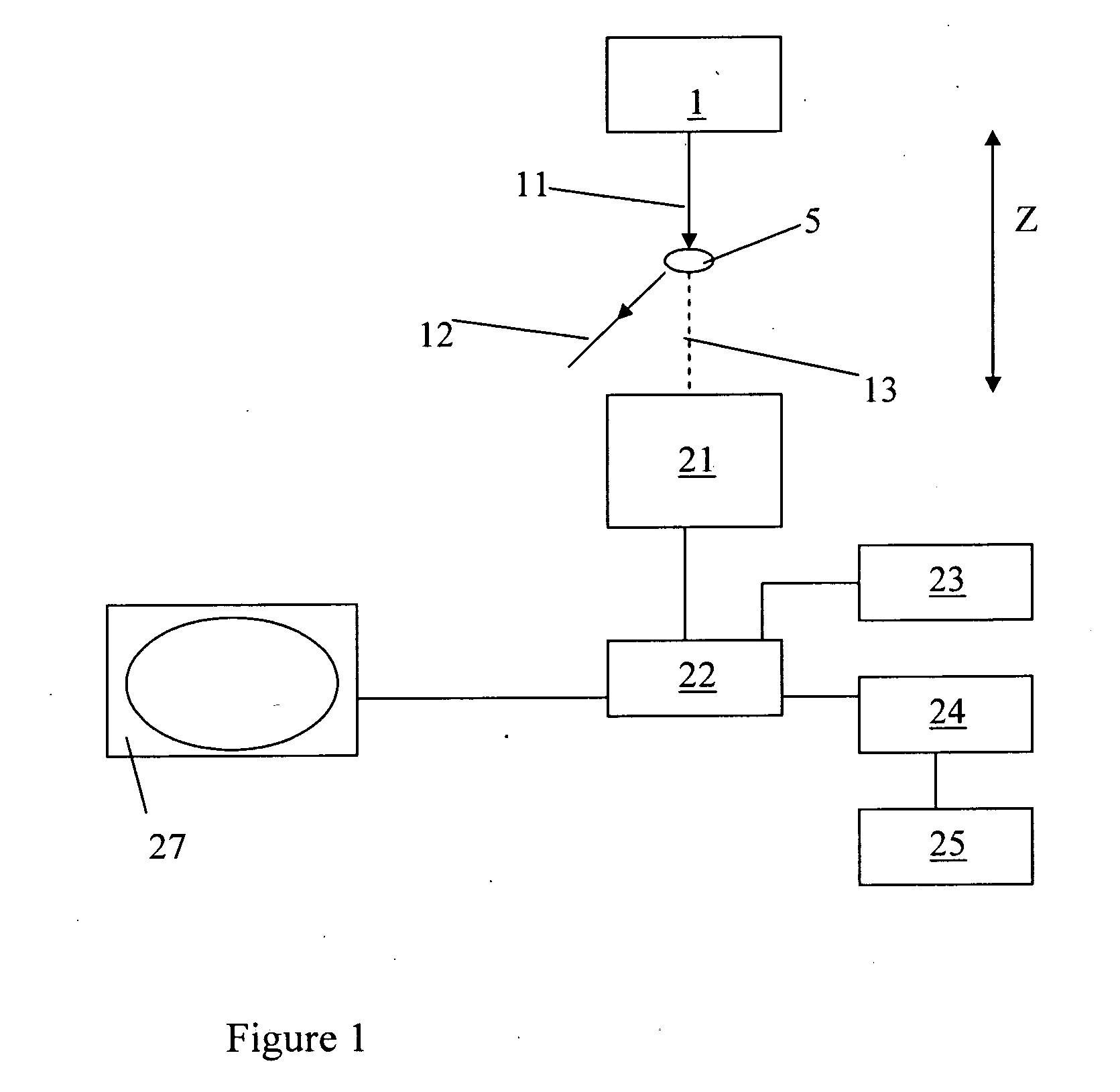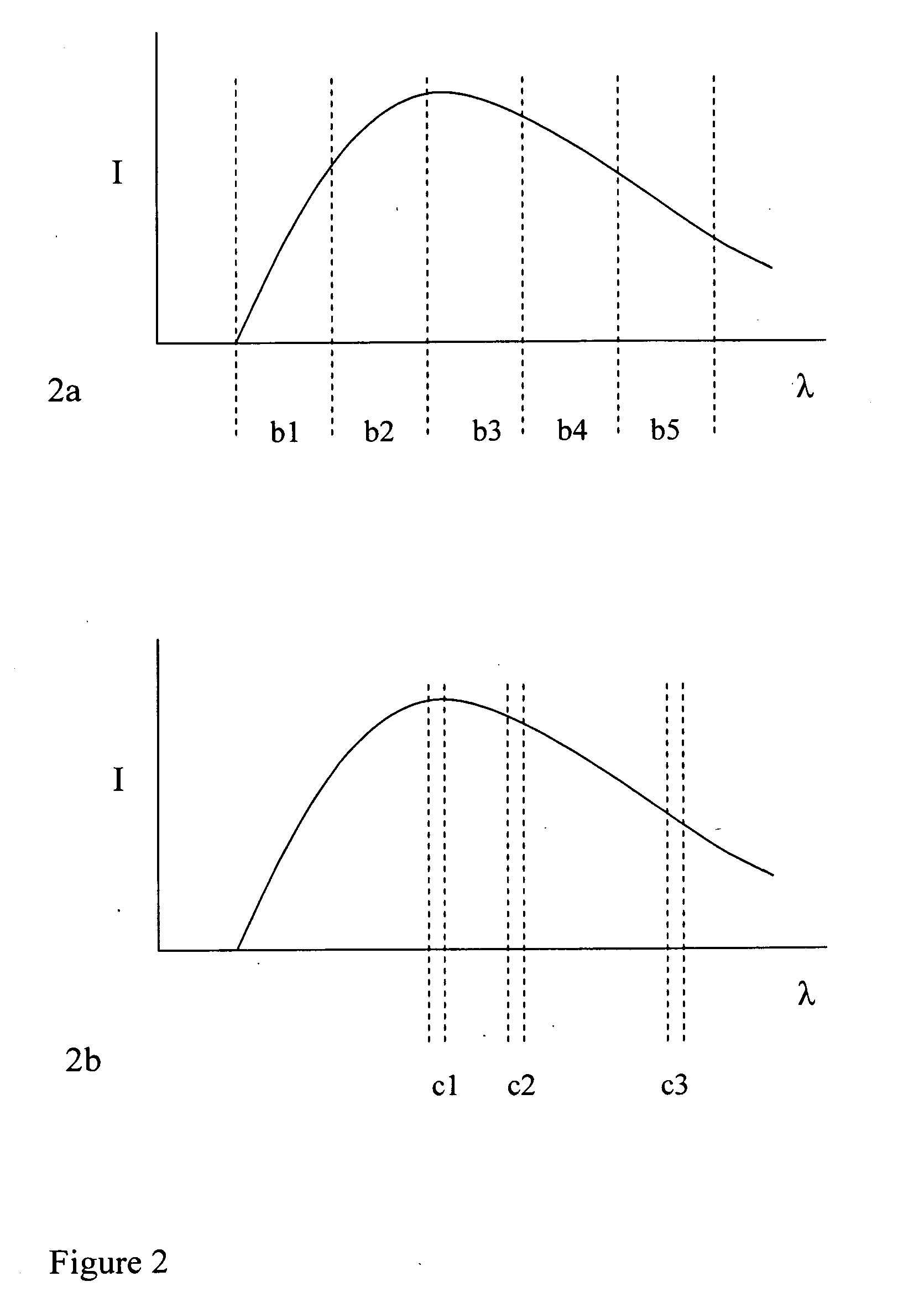Method and apparatus for inspection of materials
a three-dimensional space and material technology, applied in the direction of instruments, geological measurements, nuclear radiation detection, etc., can solve the problems of limiting the information given about the material content, unable to be precise, and devices can still be confused
- Summary
- Abstract
- Description
- Claims
- Application Information
AI Technical Summary
Benefits of technology
Problems solved by technology
Method used
Image
Examples
Embodiment Construction
[0090]Referring first to the general schematic representation on FIG. 1, an x-ray source 1 and laterally spaced detector array 2 together define a scanning zone Z between them. In use, an object to be scanned is brought into and through the scanning zone in the usual manner, for example on a suitable conveyor belt (not shown).
[0091]In the illustrated example, a sample of crystalline material 5 sits in the scanning zone Z. An incident beam 11 from the x-ray source is illustrated. In the example, a diffracted beam 12 is diffracted at a characteristic angle in accordance with Bragg's law reducing the intensity of the transmitted beam 13 above and beyond the reduction which would be attributable to absorption alone. This illustrates the effect exploited by the invention.
[0092]The transmitted beam 13 is incident upon a detector array 21 which in a preferred embodiment comprises a plural linear array of cadmium telluride detector units.
[0093]The detector array 21 is in data communication ...
PUM
 Login to View More
Login to View More Abstract
Description
Claims
Application Information
 Login to View More
Login to View More - R&D
- Intellectual Property
- Life Sciences
- Materials
- Tech Scout
- Unparalleled Data Quality
- Higher Quality Content
- 60% Fewer Hallucinations
Browse by: Latest US Patents, China's latest patents, Technical Efficacy Thesaurus, Application Domain, Technology Topic, Popular Technical Reports.
© 2025 PatSnap. All rights reserved.Legal|Privacy policy|Modern Slavery Act Transparency Statement|Sitemap|About US| Contact US: help@patsnap.com



